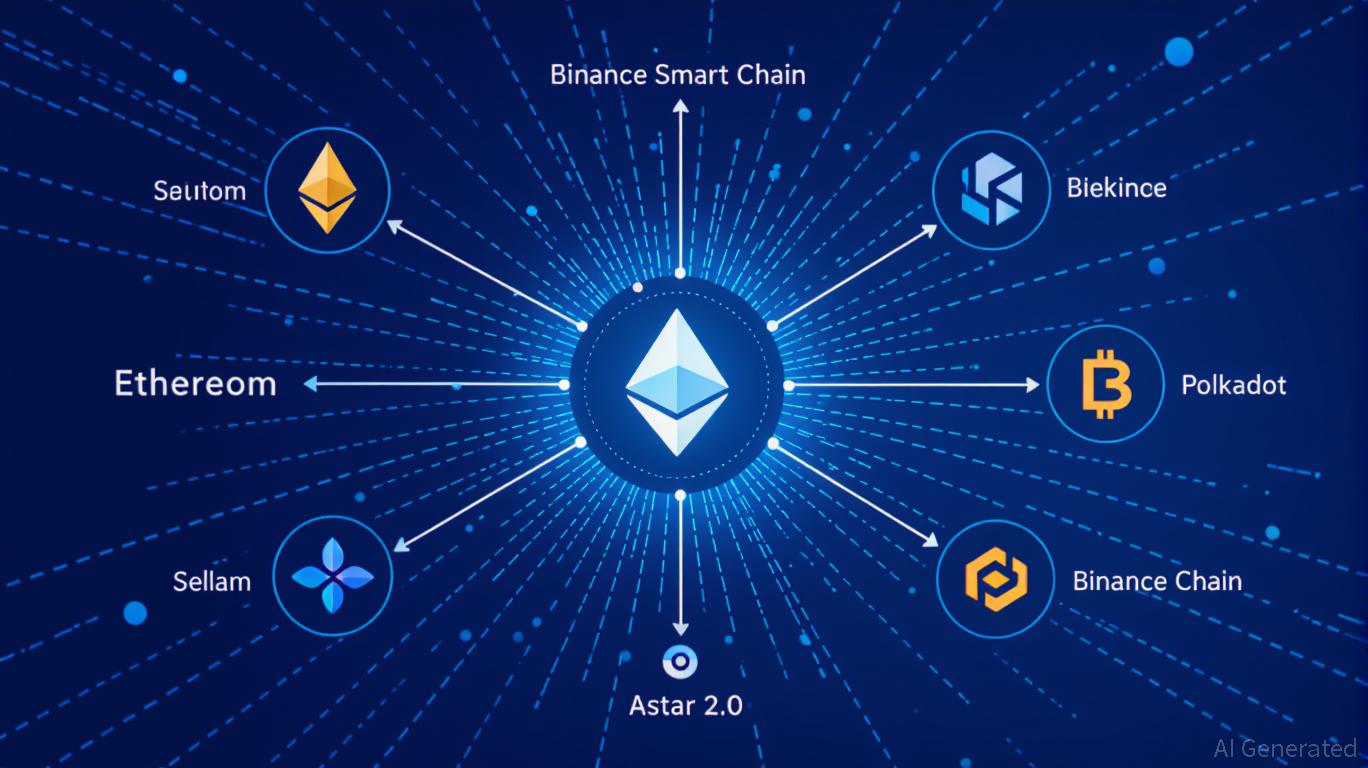Astar 2.0: Leading a New Generation of DeFi and Cross-Chain Advancements
- Astar 2.0 introduces a zkEVM mainnet and cross-chain interoperability, slashing gas fees and enabling 150,000 TPS with 2025 scalability goals. - Strategic partnerships with Mazda, Japan Airlines, and Sony demonstrate blockchain's real-world applications in logistics, loyalty programs, and digital asset tokenization. - Q3 2025 data shows $2.38M DeFi TVL growth and 20% active wallet increase, alongside a $3.16M institutional ASTR token acquisition. - The platform aims to solidify its role as a foundational
Technical Breakthroughs: zkEVM and Cross-Chain Scalability
The launch of a zero-knowledge Ethereum Virtual Machine (zkEVM) mainnet by Astar 2.0 represents a major evolution in DeFi infrastructure. Utilizing zero-knowledge proofs and rollup technology, the platform has significantly reduced gas costs and increased transaction throughput, making Ethereum-based services more accessible to both individual and institutional users
Astar’s capabilities in cross-chain operations further enhance its disruptive edge. The platform’s Astar Link framework incorporates protocols such as
Real-World Applications: From Automotive to Aviation
Astar 2.0’s collaborations with Japanese corporations showcase its ability to deliver real-world blockchain solutions. Mazda, for instance, is utilizing Astar’s hybrid blockchain to streamline supply chain management, using blockchain to monitor parts and minimize inefficiencies
Sony’s alliance with Astar further demonstrates this direction. By issuing digital assets on Astar’s network, Sony is opening up new monetization channels for creators and fans, aligning with the rising interest in NFT-driven platforms
Investor Implications: A Platform Poised for Growth
Astar’s technological progress and strategic moves are already yielding tangible results. In the third quarter of 2025, the platform’s DeFi total value locked (TVL) hit $2.38 million, outperforming the general downturn in the DeFi market

Challenges and the Road Ahead
Although Astar has gained significant traction, it still faces competition from ZK-rollup solutions and established Layer 2 networks. Nevertheless, its emphasis on security, regulatory compliance, and enterprise-level scalability—along with partnerships in sectors like logistics, aviation, and entertainment—gives it a distinctive advantage. Upcoming developments, such as the implementation of Coretime on Polkadot and Async Backing, are set to further decrease latency and enhance resource management,
Conclusion
Astar 2.0’s targeted upgrades and integration into real-world industries are transforming the DeFi and cross-chain environment. By solving issues related to scalability, interoperability, and institutional participation, the platform is not only overcoming technical barriers but also demonstrating blockchain’s practical value in traditional sectors. For investors, Astar stands out as a promising opportunity in a market with significant growth potential.
Disclaimer: The content of this article solely reflects the author's opinion and does not represent the platform in any capacity. This article is not intended to serve as a reference for making investment decisions.
You may also like
Bitcoin News Update: DeFi Faces Liquidity Challenges Amid Bitcoin Falling Under $100K
- Bitcoin's drop below $100K triggered DeFi liquidity crises, with $650M in leveraged positions liquidated as automated stop-losses activated. - Wrapped Bitcoin (WBTC) integrated with Hedera blockchain to reduce MEV and frontrunning, aiming to inject liquidity into DeFi protocols. - Hyperion DeFi reported 60% MoM validator growth and new partnerships, emphasizing staking yields over leveraged positions to avoid market volatility. - Analysts like Tom Lee predict 6-8 weeks for recovery, contingent on stabili

Assessing How Recent Ecosystem Enhancements Influence Trust Wallet Token (TWT) Price Forecasts
- Trust Wallet's Q4 2025 upgrades expanded TWT's utility through FlexGas (gas fee payments) and Trust Premium loyalty incentives, transforming it from governance to transactional token. - TWT surged 129% to $1.6 by October 2025, fueled by Binance CZ's endorsement and institutional validation of its ecosystem-driven value proposition. - The token's growth aligns with multi-token economy trends, emphasizing cross-utility, stability, and transparency through fixed supply models and public audits. - While regu

Astar (ASTR) Price Rally: Cross-Chain Compatibility Fuels Altcoin Value Growth
- Astar (ASTR) surged in late 2025 due to strategic blockchain interoperability advancements and partnerships. - Collaboration with HTX includes TGE Catalyst Grants, listing acceleration, and CEX partnerships to boost DeFi adoption. - Astar 2.0's zkEVM and CCIP integration achieved 150,000 TPS, targeting 300,000 TPS by 2025 with enterprise partnerships. - Interoperability-driven projects like Astar are reshaping altcoin valuations, aligning with growing institutional DeFi demand.

Astar 2.0 Debut and Its Impact on the Blockchain Landscape
- Astar 2.0 emerges as a strong contender in institutional blockchain adoption through Polkadot-based scalability and interoperability innovations. - Institutional confidence grows with $3.16M ASTR purchase, 20% QoQ wallet growth, and partnerships with Sony , Casio, and Japan Airlines. - Astar's 6-second block time, 150k TPS throughput, and Chainlink CCIP integration contrast with Bitcoin/Ethereum's scalability struggles and ETF outflows. - Projected $0.80–$1.20 ASTR price by 2030 hinges on Evolution Phase
